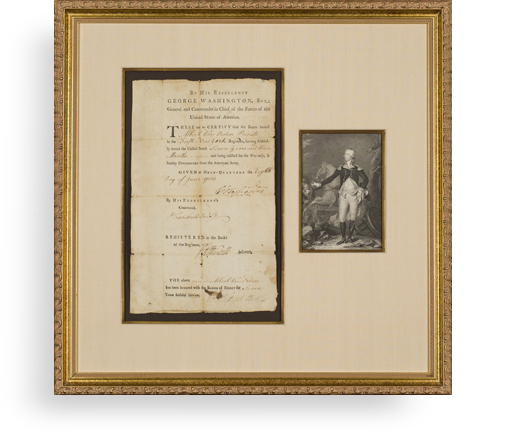sold Roosevelt Writes a Child Afflicted With Polio About Warm Springs
Roosevelt took a very personal interest in those who were afflicted with polio.
In 1921, 39-year-old Franklin D. Roosevelt contracted polio and was left paralyzed from the waist down. Roosevelt was a fighter and was determined to walk again, and found hope after hearing about a young polio victim who learned to walk again after swimming in the waters of a health spa at Warm...
In 1921, 39-year-old Franklin D. Roosevelt contracted polio and was left paralyzed from the waist down. Roosevelt was a fighter and was determined to walk again, and found hope after hearing about a young polio victim who learned to walk again after swimming in the waters of a health spa at Warm Springs near Atlanta. He moved there in 1924. When Warm Springs, a former resort area, faced economic hardship in 1926, FDR invested two-thirds of his savings to purchase it for $200,000, and created a therapeutic center under the direction of the Georgia Warm Springs Foundation. His facility opened its doors to patients all over the country, providing medical treatment and an opportunity to spend time with others suffering from the effects of polio. Roosevelt took a very personal interest in those who were afflicted with polio, many of whom were children. Lenora Burge, a ten year old, wrote FDR while he was serving as governor of New York, expressing her hope to go to Warm Springs. He took the time to answer her personally.
Typed Letter Signed on his Executive Chambers letterhead, Albany, June 8, 1931, to Lenora Burge. “I have your letter of May 27th and am taking the liberty of sending it to Dr. Leroy W. Hubbard, the physician in charge at Warm Springs, Georgia, with the request that he send you full information about Warm Springs.”

Frame, Display, Preserve
Each frame is custom constructed, using only proper museum archival materials. This includes:The finest frames, tailored to match the document you have chosen. These can period style, antiqued, gilded, wood, etc. Fabric mats, including silk and satin, as well as museum mat board with hand painted bevels. Attachment of the document to the matting to ensure its protection. This "hinging" is done according to archival standards. Protective "glass," or Tru Vue Optium Acrylic glazing, which is shatter resistant, 99% UV protective, and anti-reflective. You benefit from our decades of experience in designing and creating beautiful, compelling, and protective framed historical documents.
Learn more about our Framing Services





































































































